Paris: Propriety and Urban Rebellion
Navigating Church, Culture, and Anarchism in the vibrant capital of France
After three years in France, for the first time I will go to Paris. Until now I had no reason to go. Tonight I need to attend a certain anarchist meeting. I will explain, but later. The motley crew - three other revolutionaries and I, all disguised as ordinary citizens (complete with tickets and even a cheeky capitalist cappuccino), board the train at Lille station.
It is fresh, early winter morning. With hours to spare before tonight's clandestine meeting, I am going to seize the day to immerse myself in Parisian life. After two hours, the train approaches Paris’ Gare du Nord. Let’s go explore!
Already in Paris, I take the metro to the historic center. In the tunnel, out of the corner of my eye, I notice a portal to another dimension. While this is inviting, I have no time for checking other universes, so I move on.
Religion
I aim for the 11:30 Sunday service in Cathédrale Notre-Dame. Outside the church, I encounter a long line of people. At closer look, those are three distinct queues, labelled: Tickets, No Tickets, and Messe. I first join the “Entries No Tickets”, because I have no ticket. Then I notice another, shorter line “Entries with Tickets”, so I cut in, because I am an anarchist. Then I find a third line called Messe (religious service), shortest of all! So I cut in again, because I am Catholic. That way I thought I outsmarted the system but unfortunately not; as the bells begin ringing and the cathedral doors open, we enter only to realize we are trapped.
People from Tickets and No Tickets lines are free to roam the cathedral, while we from Messe line are contained in the central space surrounded by ropes. More pilgrims fill in the church, and it gets cramped. I notice uneasy looks and murmuring of people around me. No one speaks French and I get a feeling that there were quite a few more disguised anarchists in our Messe line. In any case, I have never seen so many people in any church in France (see my Lille Cathedral story).
The sermon, in French, is about Jesus calling us to follow him.
"parce qu'il y a ici - et là-haut, et il y a maintenant - et après" (Because there's here - and up there! And there's now - and after!) - finishes the priest, gesturing to the sky, alluding to earthly versus heavenly life. The sermon is disappointing - neither intelligent nor original, nor addressing any of the contemporary issues. The cathedral, rebuilt after fire, is brand new, but the words spoken inside are from forty years ago.
Then we are handed printouts with a hymn to sing, but no one does. The fake pilgrims look at the sheet of paper with amusement, some also check time on their phones. I wonder how many of them ever attended a church service. Luckily, songs play from loudspeakers. So we don’t even have to sing, although some people silently open their mouths like fish, while the real song plays from the recording. This I have never witnessed in any church - neither in France, nor in any other country.
The song attracts the attention of people from Ticket and No Ticket lines, who until now kept wandering around and talking loudly. Now they start taking pictures of us, singing. Some fake pilgrims near me send them #BurnInHell looks. All this is fun to observe, but creates no mood for a prayer, so I decide I’ve prayed enough, find an opening between the ropes and sneak out to the tourist space.
From the tourist perspective, I also see better. Sermon did not evolve for the past forty years, but some things did. The money basket now has credit card reader.
Regarding the cathedral itself, I will leave space for other bloggers to describe it. To my personally, many Gothic churches have something unique, but this one is just big.
Culture
After church, it is time for intellectual stimulation. Maison Européenne de la Photograpie is just a few blocks away. Today’s exhibition features Dennis Morris, the photographer who assisted Bob Marley, Sex Pistols and other famous figures of 1960's and 1970's. The mostly black-and-white pictures are nice, but resemble the sermon from the church - in the sense of being detached from here and now. I walk past two floors and seven rooms documenting the 1970’s Sex Pistols tour. I search for other topics, more intriguing and more contemporary, but there aren’t any. I leave the museum after twenty minutes, 13 Euro lighter. As I depart, the young Bob Marley turns his head towards me and gives me a half-smiling, half-disappointed look.
Food
After nourishing my soul and intellect, it is finally time for my stomach. Not far from the museum, I find Les Petites Bouchées, a restaurant with decent reviews. I hesitate, because next door is Taiwanese Chez Ajia. Errr… a nice-looking plate or a generous one? After much deliberation, I conclude that it's Paris, so it should be French. I sigh, and, resigned, press the door of Les Petites Bouchées. Inside, I confront a surprised look of two persons, a cook and the lady owner. “On est fermé monsieur”, says the lady. Right…so much time spent in France, and I can never learn this simple rule: shops, restaurants, public administration offices, swimming pools and libraries - are mostly closed when you need them.
This makes my choice easier, and soon Chez Ajia, which is somehow open, earns another happy customer.
Ending my visit in Quartier Saint-Paul, on Pont d’Arcole I catch this image of a street pianist. facing a homeless person. Both have pots for money.
Detox
The afternoon comes, Touristy stuff is over, and I do need a detox. I take the metro to Montreuil, a distant suburb. Here is Montreuil.
In Montreuil, I head straight to Les Hivernales. That’s annual meeting of chorales militantes. This translates, I think, as "revolutionary choir" or maybe “activist choir”. A chorale militante, a phenomenon that may exist solely in France and Italy, is a choir with anti-capitalist, anti-imperialists and pacifist repertoire, often linked to protesting against sexism, racism, and nuclear energy. I am proud of member of one such choir in Lille. We have plenty of fun singing together.
Before you ask me what I think about nuclear power… let me respond with a question. When you meet an American, do you inquire upfront whether he or she has lately seen an angel? And if they did, do you proceed to debunk it scientifically as a hallucination? Notably, 70% Americans believe in angels. Rather than judging whether it’s good or bad, I say it’s part of American folklore. And part of French folklore is, for the good or the bad, to depose heads of kings, and oppose anything government-related, including nuclear energy.
Les Hivernales make perfect detox after a day in disguise of a decent citizen. The event takes place in A.E.R.I, the utopian alternative meeting point that caters for dissidents, anarchists and various formal and informal associations. The weekly cantine - communal kitchen - takes place here. In the space next door, a Ghanian baker sells his home-made bread. The main meeting space decor is gibberish of purposely broken giant plastic blueberries hanging off the ceiling. Hell knows where they took them from, but the budget was probably zero. A pint of beer costs 2 Euro. Tables are made of bizarre plastic tubes glued together by volunteers. Placing a beer mug on an uneven surface of such a table is challenging, and that's part of the experience.
The energy is electrifying, and it rises the longer we sing. Each choir contributed a song. Our very own Sante Crastine quickly becomes wildly popular. In the song, an unemployed person addresses an imaginary saint with tongue-in-cheek invocation, pleading for protection against daemons. Those daemons are: the productivity, the GDP, and, first of all, the unemployment office clerks, trying to find him a job. French humor thrives on wordplay. Here, Sainte Crastine cleverly nods to both Saint Christine and procrastination, while Saint Pool winks at both the biblical Saint Paul and Pôle d’Emploi, the notorious employment bureau. It is simply hilarious.
Towards the evening, the energy culminates with Chant des Corsaires.
Apparently, this powerful piece stems from original songs of Flemish corsairs once employed by the French crown to loot and burn Dutch and British merchant ships. The song sounded genuine (male roles were replaced by female, but that’s minor). I only got confused with the final verses:
Faisons la guere / a notre manière
Car ce n'est pas le hasard / qui nous command'ra le départ
It meant we’ll fight in our own way, and depart not by chance. These words did not sound very corsairy to me, so I checked the original and made a discovery. The original song, before pacifist censorship, read:
Faisons la guerre / a l'Angleterre
Car c'est la fameux Jean Bart / qui nous commandera le départ.
Translation: we'll make war on England, under the command of Jean Bart. That’s France’s chief corsair, celebrated for his audacious raids against Dutch and English fleets during the late 17th century.
That’s a good closure of the day in Paris. I admit there was a moment when devil tempted me to become a bourgeois, but later my soul was saved. Paris is checked off, I probably won’t come back for some time, but should I ever consier moving in, it will be Montreuil rather than Quartier Saint-Paul.
Post Scriptum
During the carnival of Dunkirk, held every year the Sunday before Holy Tuesday, local people kneel all together in front of Jean Bart’s statue and sing the Cantate à Jean Bart. I live not far, so … stay tuned.
More French stories
Support Ukraine and support Europe.

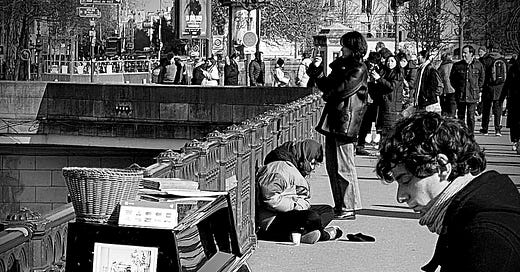



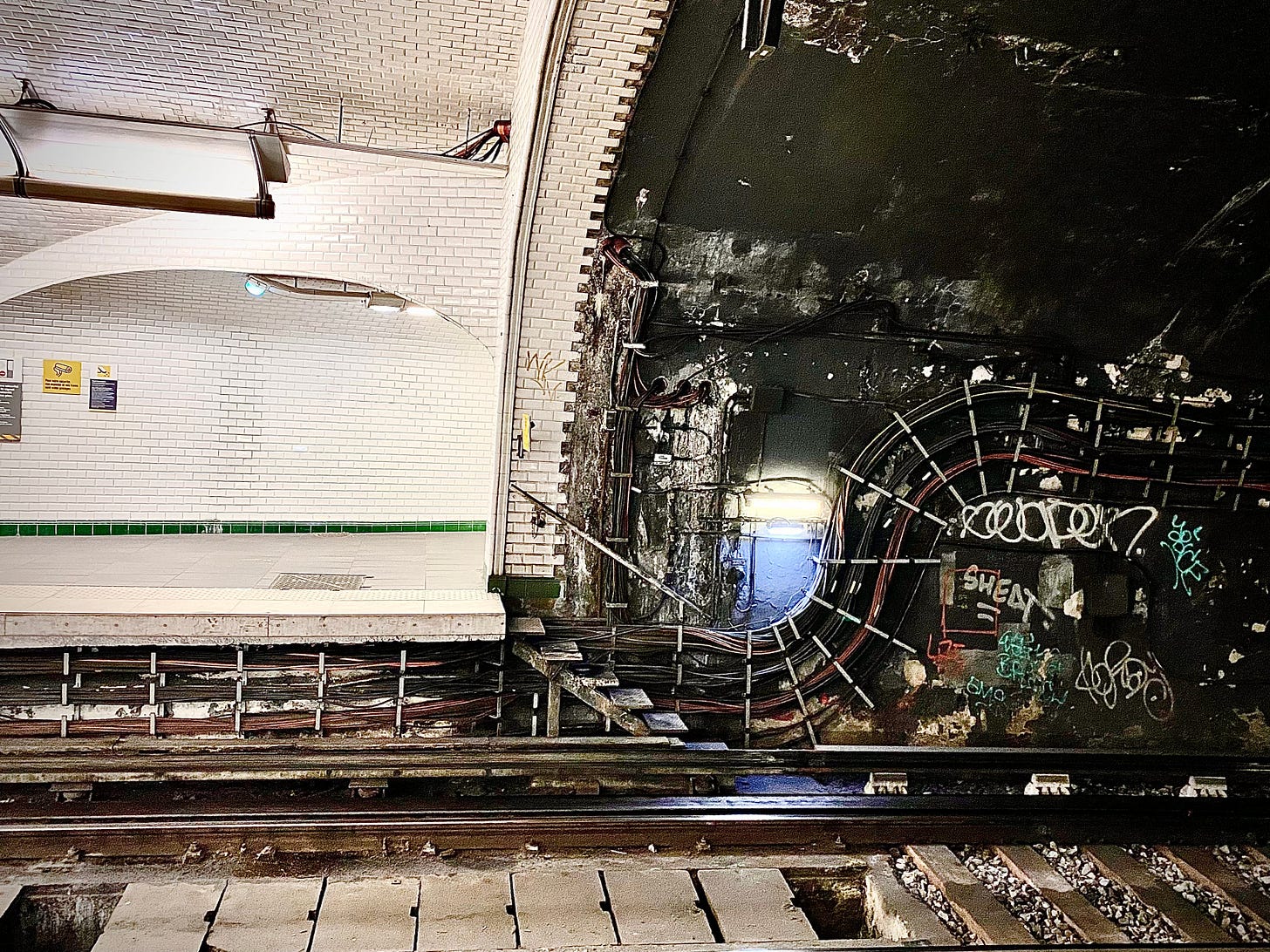
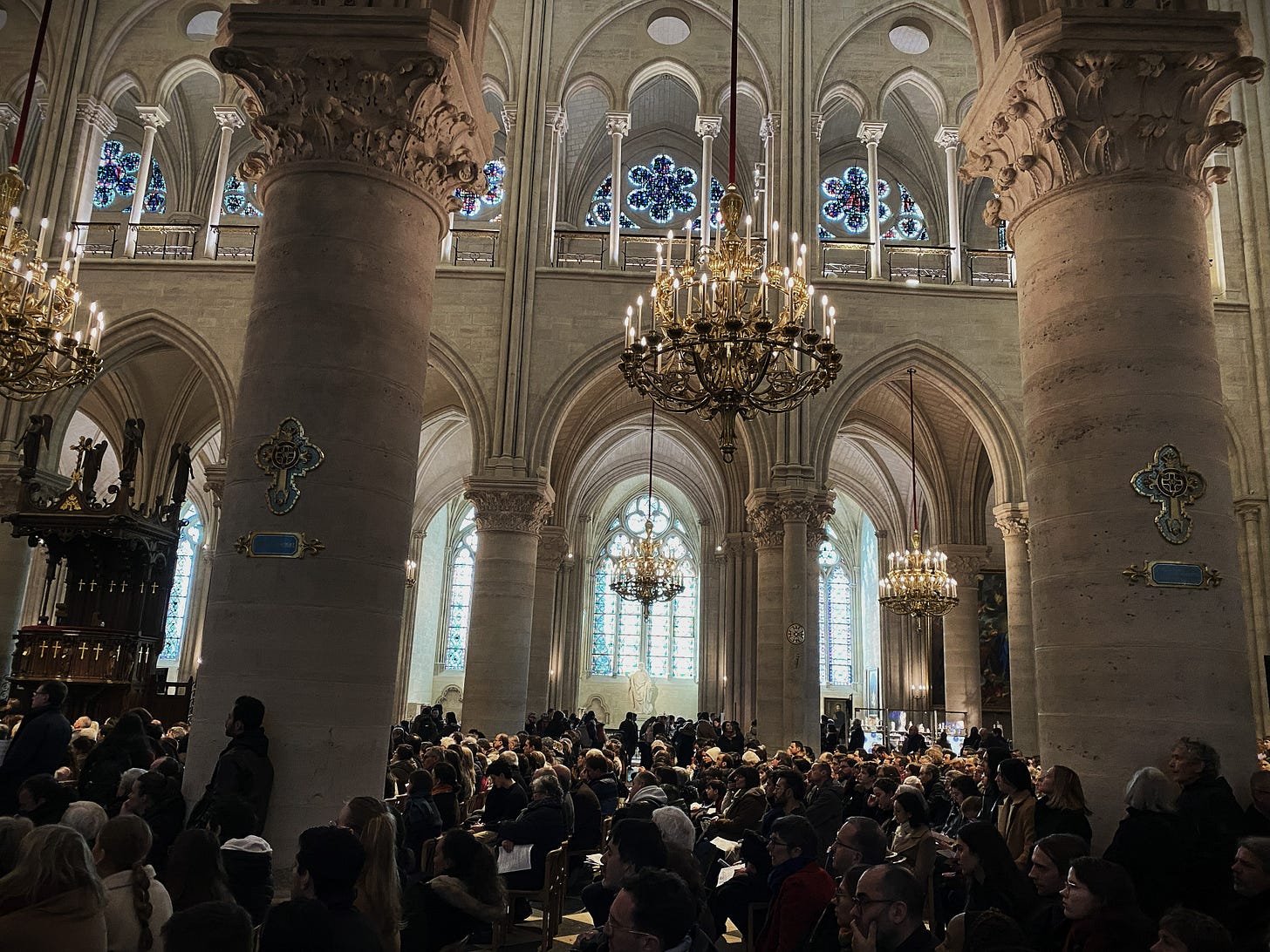
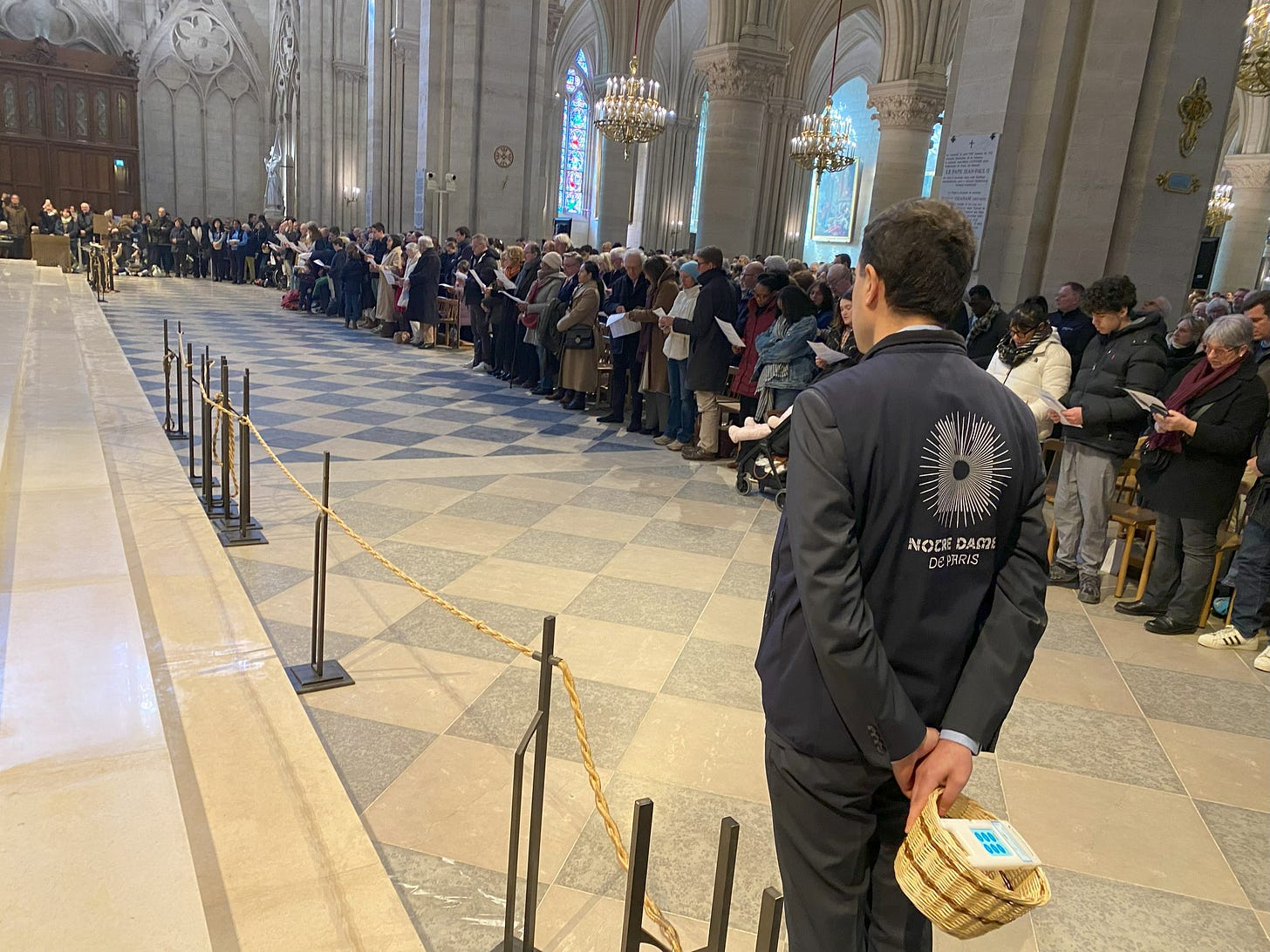
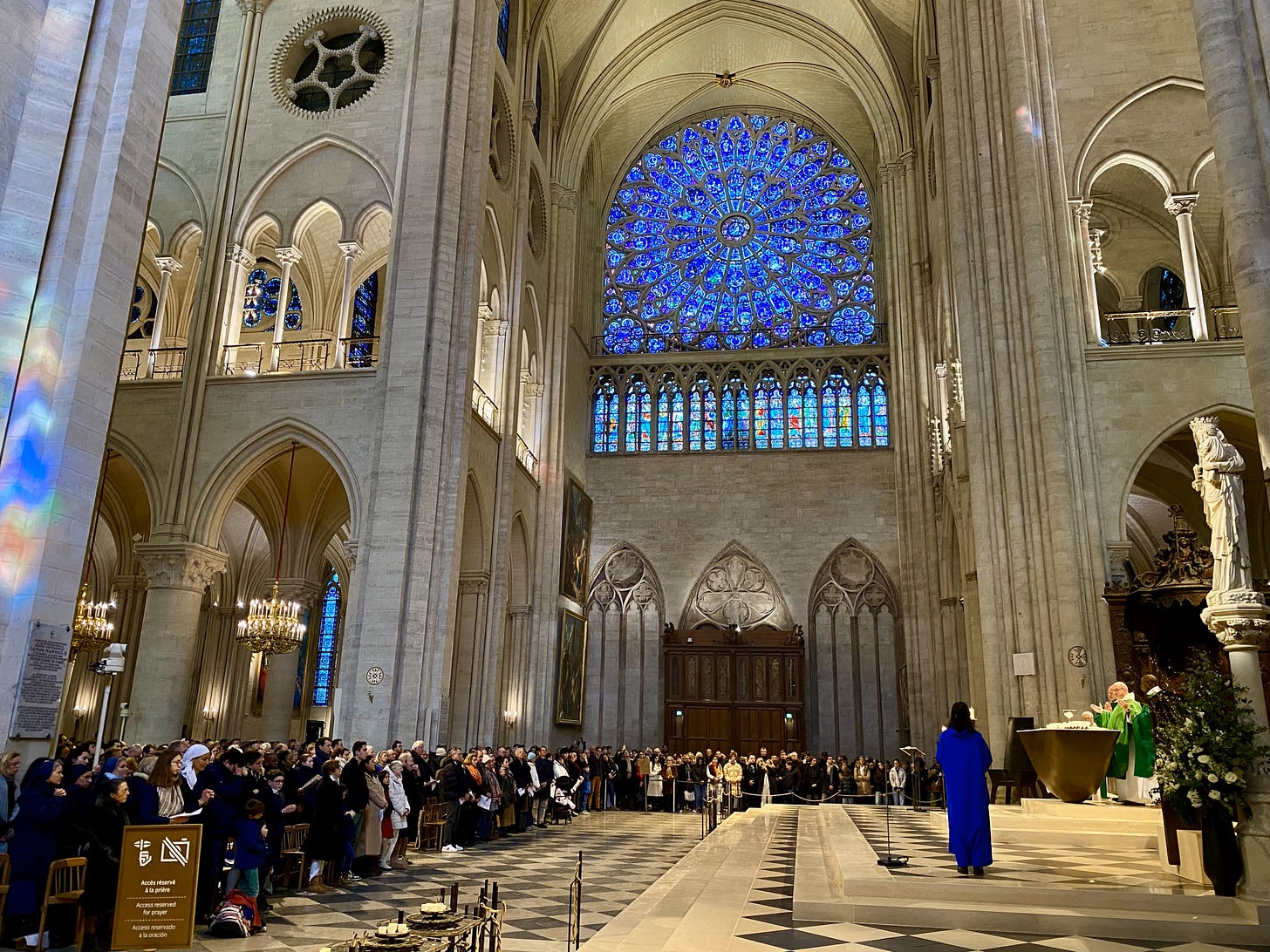
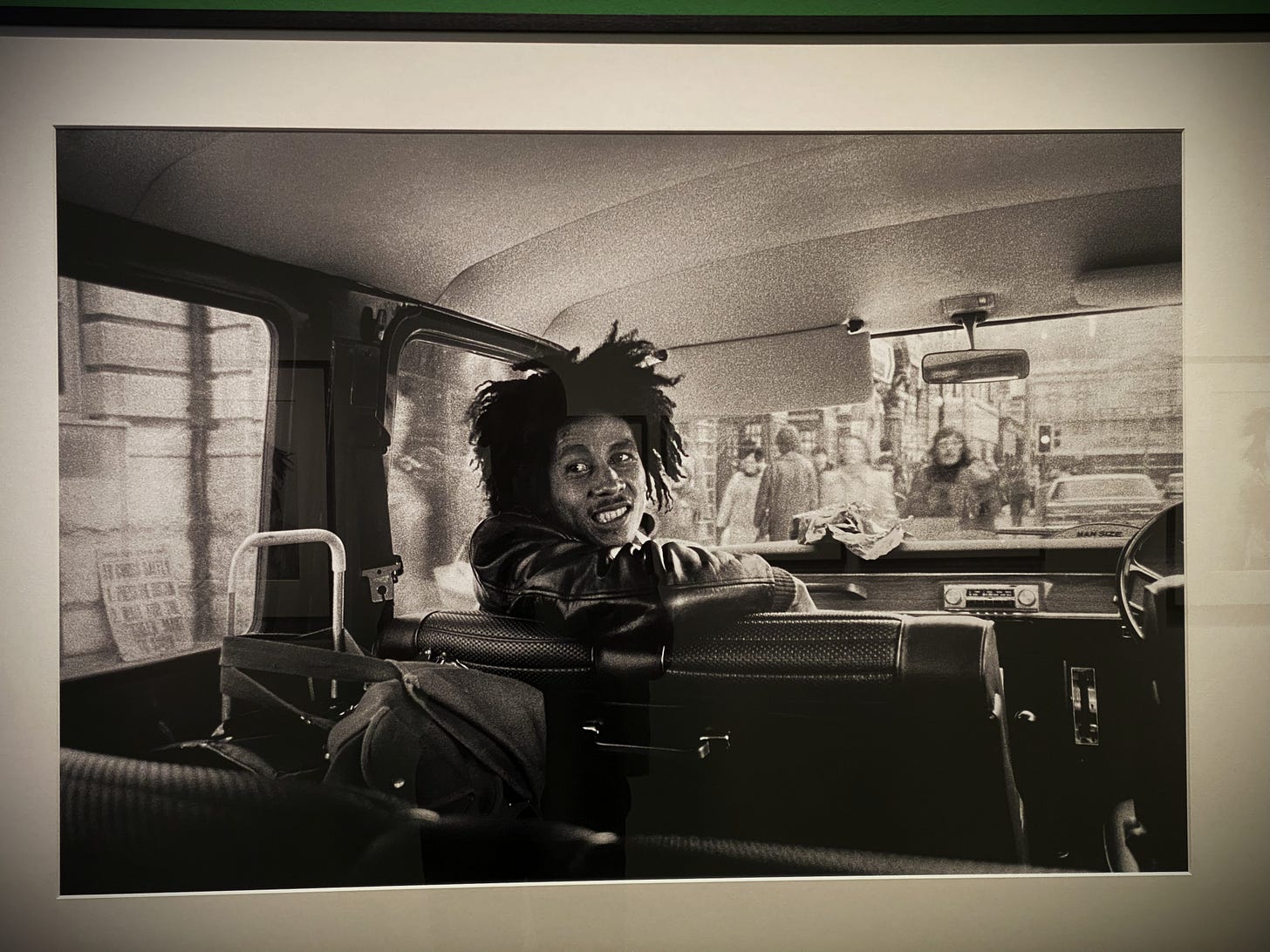
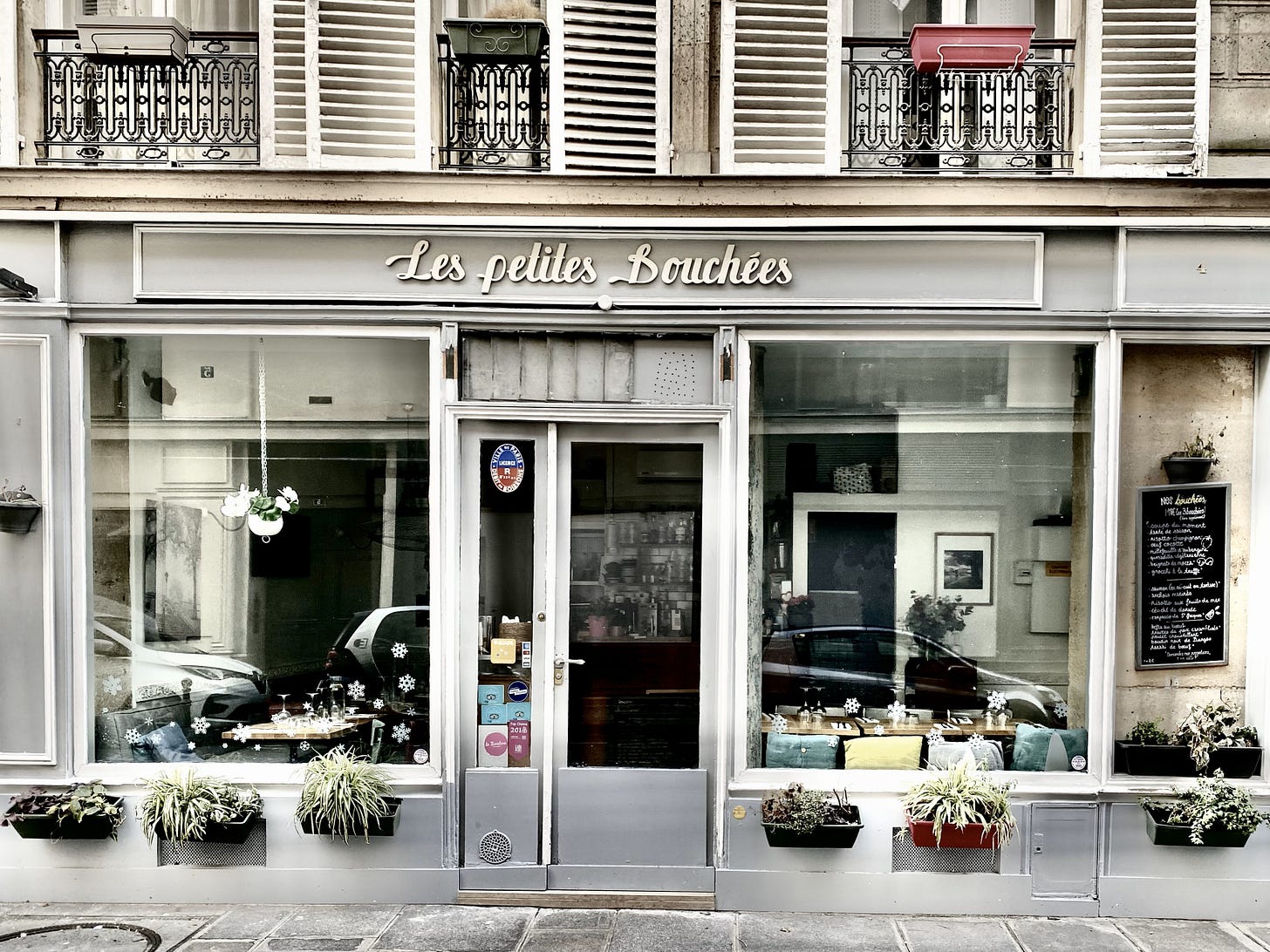


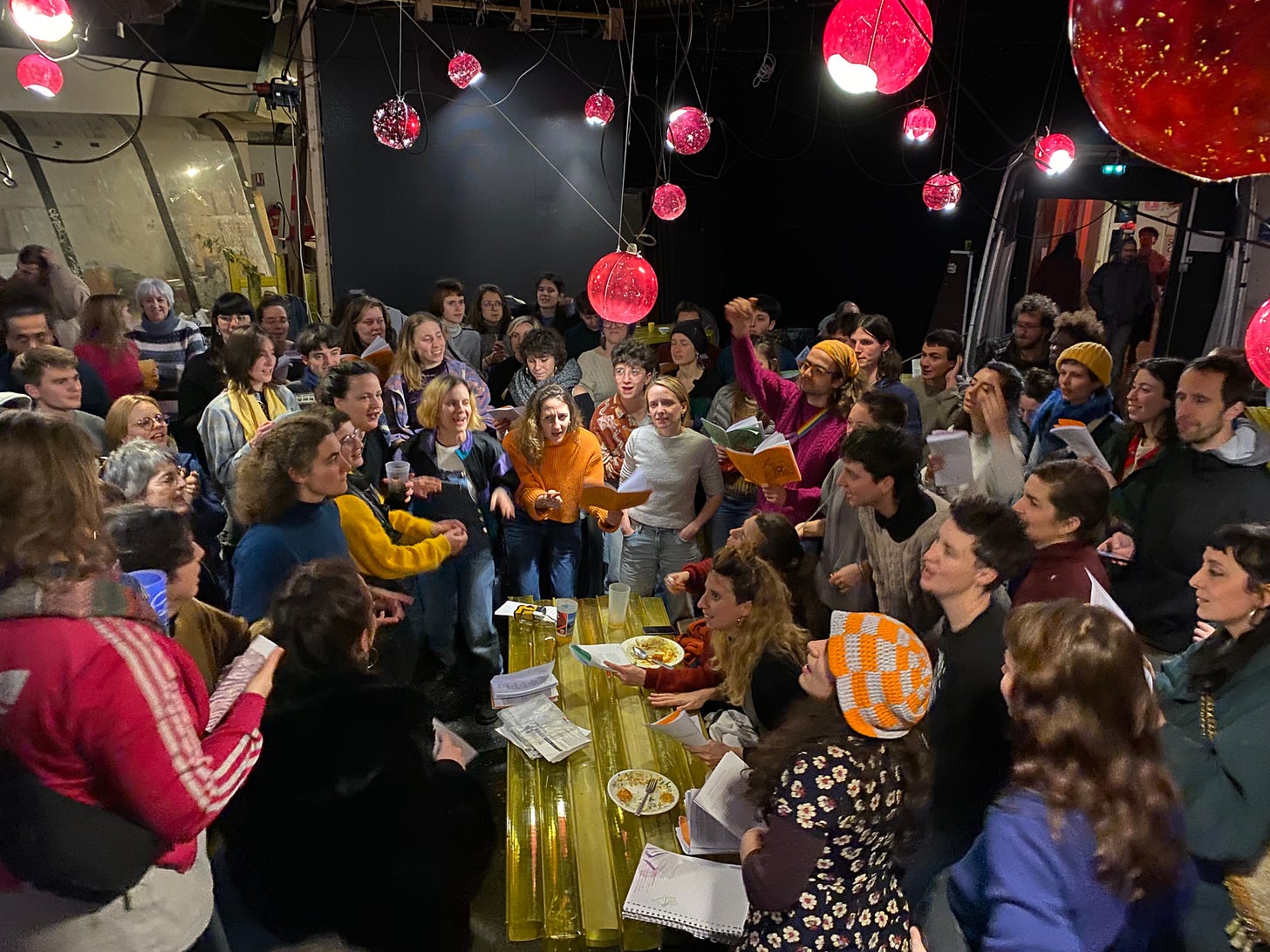
yes Daniel! some things are "generational", by which I mean certain fade are specific to certain generation. For instance, in some countries the hippies have grown old and fat, while the young ones are just computer nerds, but in France the revolutionaries are of all ages, both old and young!
This was such a refreshing take on Paris, far from the usual romanticized clichés of cafés and landmarks (which, to be fair, I love too!). Your experience at Notre-Dame, where “the sermon did not evolve for the past forty years, but some things did. The money basket now has a credit card reader,” perfectly captures the tension between tradition and modernity. And the anarchist choir in Montreuil? That’s a side of Paris I’ve never seen. I haven’t been there many times myself, but this makes me want to experience it in a whole new way!